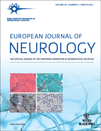The burden of headache in Russia: validation of the diagnostic questionnaire in a population-based sample
Abstract
Background: We report validation of the Russian-language version of the Lifting The Burden headache screening and diagnostic questionnaire in a population-based sample of 501 individuals in four cities (Smolensk, Tchelyabinsk, Nishny Novgorod and Tver) and three rural areas (Tula, Tver and Gornyi) of Russia.
Methods: The structured questionnaire, based on ICHD-II criteria, was applied face to face by trained non-medical interviewers calling at randomly selected households. Response rates were about 73% in cities and 80% in rural areas.
Results: Of those responding, 301 reported headache in the previous year; of the total sample, 143 people with and 47 without headache according to the questionnaire were re-interviewed by telephone by one of the two neurologists unaware of the questionnaire diagnoses. Migraine (MIG), either definite (dMIG) or probable (pMIG), was diagnosed by the questionnaire in 72 cases, and tension-type headache (TTH), either definite (dTTH) or probable (pTTH), in 66 cases; the five others with headache were unclassifiable by questionnaire. Physicians diagnosed dMIG or pMIG in 65 cases, dTTH or pTTH in 89 cases and no headache in 31 cases; in five cases, headache was unclassifiable. The questionnaire had sensitivities and specificities of 77% and 82% for MIG (κ = 0.58) and of 64% and 91% for TTH (κ = 0.56).
Conclusions: We concluded that the questionnaire can be utilized in a population-based countrywide survey of the burden attributable to primary headache disorders in Russia.




